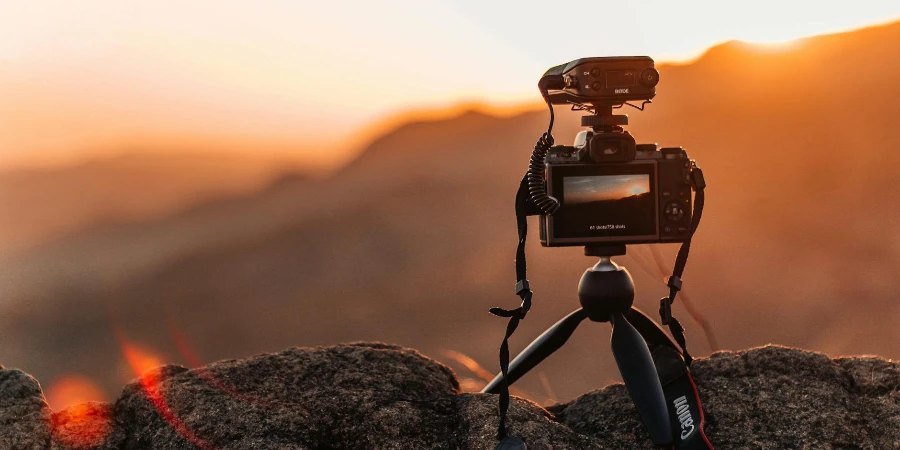A camera tripod is an indispensable tool for both amateur and professional photographers. It provides stability to the camera, allowing for sharper images, especially in low-light conditions or when using slow shutter speeds. Understanding how to select and utilize a camera tripod can significantly enhance the quality of your photographs. This guide will explore the ins and outs of camera tripods, from their operation to their advantages and how to make the best choice for your photography needs.
Table of Contents:
– What is a camera tripod?
– How does a camera tripod work?
– Benefits and drawbacks of a camera tripod
– How to choose a camera tripod
– How to use a camera tripod
What is a camera tripod?

A camera tripod is a three-legged stand that supports a camera or other photographic equipment to stabilize it. Typically made from materials like aluminum, carbon fiber, or basalt fiber, tripods are designed to prevent camera movement and ensure sharp, high-quality images. They come in various sizes, from compact, lightweight models ideal for travel to heavier, more robust versions for studio work. Tripods usually feature a head that allows for the camera’s angle and position to be adjusted, making them versatile tools for different photography styles and techniques.
How does a camera tripod work?

The fundamental principle behind a camera tripod is stability. By evenly distributing the weight of the camera across three legs, it minimizes the risk of camera shake, a common issue that leads to blurry images. The legs of a tripod can be adjusted to various heights and angles, providing flexibility in framing and composition. The head of the tripod, which connects to the camera, can be a ball head, pan-tilt head, or gimbal head, each offering different levels of control over the camera’s movement and orientation. This adaptability makes tripods suitable for a wide range of photographic endeavors, from landscape and portrait photography to long-exposure and time-lapse shots.
Benefits and drawbacks of a camera tripod

Using a camera tripod comes with numerous benefits. It significantly improves image sharpness, particularly in low-light conditions where longer exposures are necessary. Tripods also facilitate precise framing and composition, essential for professional-quality photographs. Moreover, they enable photographers to experiment with creative techniques such as long exposures, HDR photography, and panoramic shots. However, tripods can also have drawbacks. They can be cumbersome to carry, especially during travel or when shooting in remote locations. Setting up a tripod can also be time-consuming, potentially causing you to miss spontaneous shots. The choice to use a tripod depends on the specific requirements of the shoot and the photographer’s priorities.
How to choose a camera tripod

Selecting the right camera tripod involves considering several factors. First, think about the weight of your camera and lenses; your tripod needs to support this weight securely. Material is another important consideration; carbon fiber tripods are lightweight and durable but tend to be more expensive than aluminum ones. The height of the tripod is crucial too; ideally, it should reach your eye level without extending the center column, as this can reduce stability. Lastly, consider the head type; a ball head offers quick adjustments, while a pan-tilt head provides more precision. Balancing these factors based on your photography style and budget will help you find the perfect tripod.
How to use a camera tripod

Using a camera tripod effectively requires more than just mounting your camera on it. Start by setting up the tripod on a stable surface and adjusting the legs to the desired height. Ensure that the legs are securely locked to prevent the tripod from collapsing. Attach your camera to the tripod head, making sure it’s tightly secured. When composing your shot, take advantage of the tripod’s stability to fine-tune your framing and focus. For the sharpest images, use a remote shutter release or your camera’s timer function to avoid shaking the camera when pressing the shutter button. With practice, using a tripod will become an integral part of your photography process, significantly enhancing the quality of your images.
Conclusion:
A camera tripod is a powerful tool that can transform your photography, offering stability that results in clearer, more professional photographs. By understanding how tripods work, their benefits and limitations, and how to choose and use one effectively, photographers can unlock new creative possibilities and take their skills to the next level. Whether you’re capturing breathtaking landscapes, intricate macro shots, or vibrant cityscapes, a tripod is an essential accessory that no photographer should be without.




